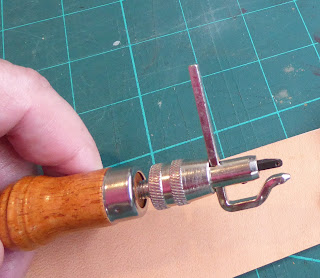Using a Resist & Antique Gel

Following on from carving a coaster this time I want to show you how to use a resist to produce three shades from just one application of antique gel. You are going to need a small clean paintbrush, some clean paper to cover your work area to absorb any splashes, water, kitchen towel, gloves, resist (I am using Supersheen but you can use watered down PVA) a dauber and Eco Flo Antique Gel (I am using Mahogany). Before you start take a sheet of kitchen towel and wet one corner. If you accidently splash even a tiny speck of resist you need to immediately blot it with the wet kitchen towel and if you don't do it immediately it will be too late and you wont be able to remove it. Working in a good light paint a thin layer of resist onto those areas you want to remain lighter in colour. I have deliberately put a small spot of resist on to the outer border to show you just how much it will show up later on. By the time you have completed one layer you can immediately apply a second a...


